Behind The Seams: 1950’s Pleated Dress by The Carlye Dress Corporation
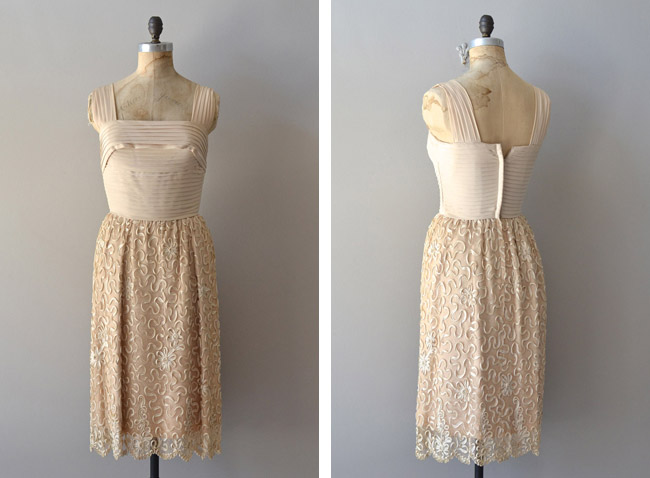 This lovely lady was photographed by Lauren Naimola, from her DearGolden Etsy shop of vintage garments and accessories.
This lovely lady was photographed by Lauren Naimola, from her DearGolden Etsy shop of vintage garments and accessories.
The Carlye Dress Corporation was formed in 1938 in St. Louis, Missouri. It was one of the great junior dress houses located in the city that was noted for its junior wear industry. In the 1940s, one designer was Margot Kopps McClintock, another was Marion McCoy who later had her own label. Sometime before 1967, Carlye was bought by clothing manufacturing giant Leslie Fay and merged into their existing lines. – via Vintage Fashion Guild
The Carlye dress we have for you today is composed of 3 layers:
- Shell fabric that is pleated on the bodice and gathered on the skirt.
- A silk or rayon taffeta lining for support and volume.
- Dotted net decorative outer skirt with a top-stitched ribbon.
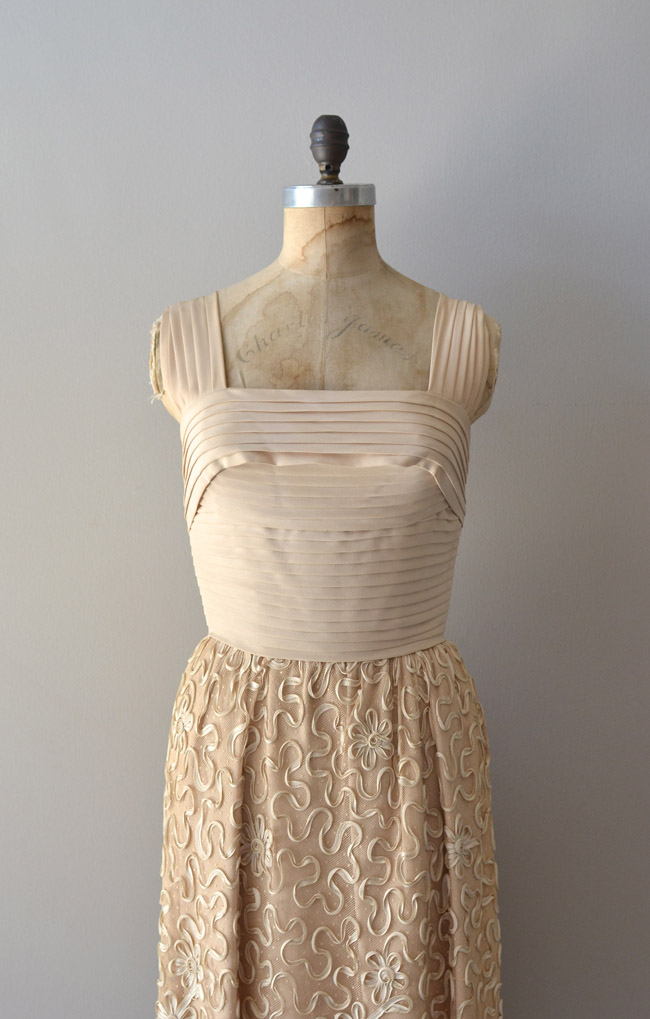
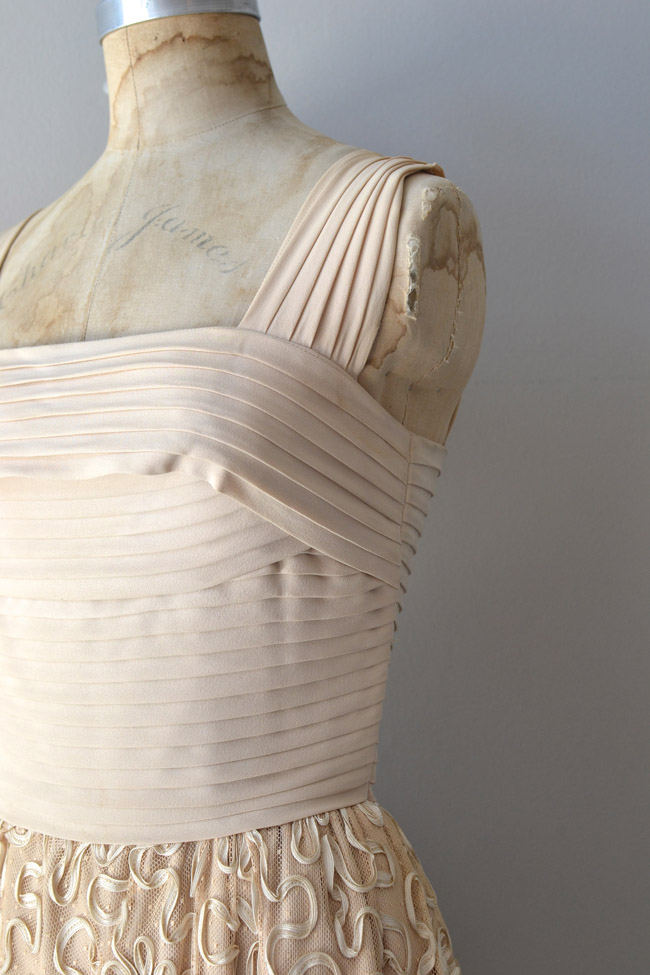
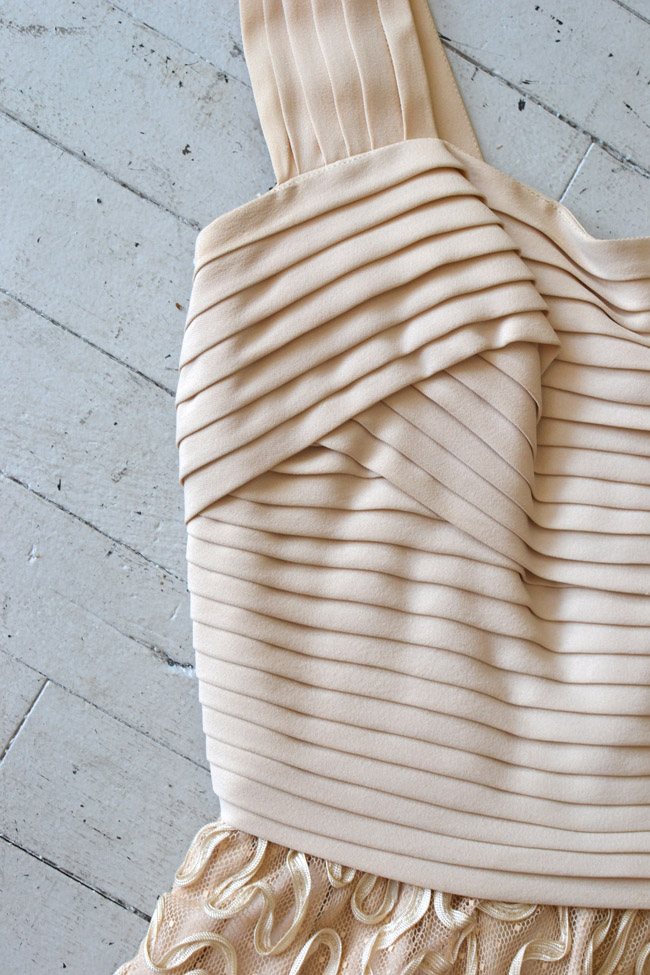 Pieced Bodice: The front of the bodice was beautifully constructed from three pieces of pleated shell fabric.
Pieced Bodice: The front of the bodice was beautifully constructed from three pieces of pleated shell fabric.
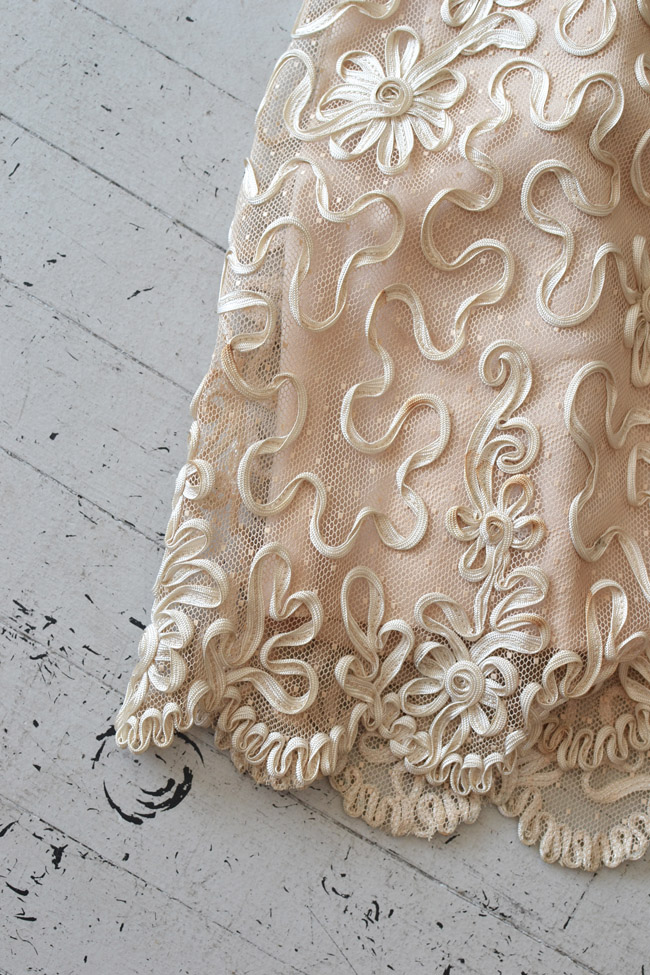 Flexible Ribbon Detail: This ribbon was made of a woven silk or rayon. The weave enables it to curl and spiral, creating lovely shapes. It was top-stitched by machine to the dotted net layer.
Flexible Ribbon Detail: This ribbon was made of a woven silk or rayon. The weave enables it to curl and spiral, creating lovely shapes. It was top-stitched by machine to the dotted net layer.
Scalloped Hem: The dotted net was trimmed in a scallop shape, then flexible ribbon was top-stitched in a snaking fashion to exaggerate the shape.
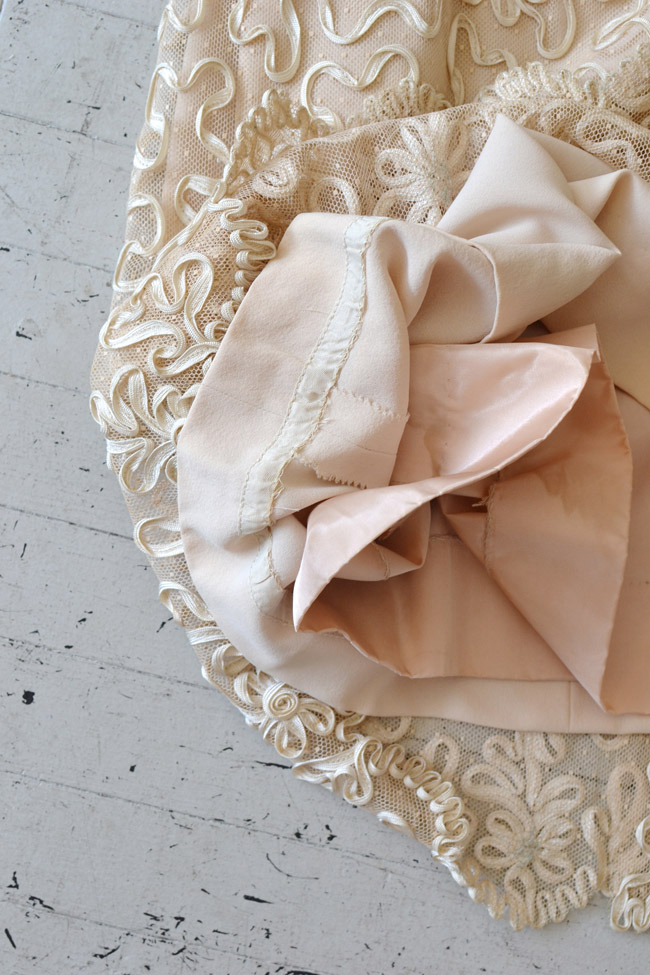 Handsewn Blind Hem: To better understand how a blind hem like this is made, check out Sarai’s blind hem tutorial. The only difference here is that hem tape was used on on the raw edge of the shell fabric, then handsewn with a slip stitch.
Handsewn Blind Hem: To better understand how a blind hem like this is made, check out Sarai’s blind hem tutorial. The only difference here is that hem tape was used on on the raw edge of the shell fabric, then handsewn with a slip stitch.


 Sign In
Sign In

Comments
L Carolyn ghearing
October 14, 2013 #
Beautiful dress, beautiful color, beautifully constructed!
Angela.
October 14, 2013 #
I adore seeing the construction on vintage dresses! Thank you for posts. I have become far more willing to take more time to finish a dress as I realize more and more that the shoddy workmanship on today’s garments really isn’t the “only way to sew”, that speed isn’t the only thing that matters. Seeing the results of good workmanship speaks a thousand words.
emily
October 14, 2013 #
Hi,
I love your “behind the seams” posts, but when you show the beautiful vintage dress on that brown-stained bustform, it really cheapens the look of the photo. it looks nice against the aged wood, but on that mannequin, it looks dirty, especially when the dress is a neutral-y pink color.
I just wanted to give you my two cents!
Lori W
October 14, 2013 #
Gorgeous dress! Love seeing the inner details of how this dress is made. Thanks for your Behind the Seams post!
Lyn
October 14, 2013 #
Oh how I love the bodice on this dress! The pleating is superb, although I have no idea how to replicate it. The skirt really isn’t my style (but I can fully appreciate the workmanship), but the bodice, the bodice…!!
Sherri
October 14, 2013 #
Love this dress. Its so beautiful. Just wish that someone could re produce patterns like this – especially for the woman who is a mature size. The under lying construction and the detail hark back to a time where things were meant to last.
Carol Hanson
October 14, 2013 #
Oh, to have such a beautiful dress! Oh, to have the figure to wear it! Thank you for these little trips to the past. They lift my spirits just seeing such lovely work.
cynthia gehin
October 14, 2013 #
I love the flexible ribbon trim. Always wondered how that was applied to a garment. Thanks for the great vintage ‘inner views’ of garments. Nice that something was made as well on the inside as the outside. Pretty scary to look at some of the dresses at Target on the inside. Makes you think they wouldn’t make it through a gentle hand-wash one time. I appreciate Colettes’ commitment to quality construction.
Eileen
October 15, 2013 #
The presentation of this beautiful vintage garment is wonderful. The stained spot on the skirt, the ragged edges of the much used dress form, the hand stitching, the embellishment on the skirt presents an image of an era gone by.
Thank you for this “gift”.
Jessie
October 15, 2013 #
I love your Behind the Seams posts! I’m curious, what kind of seam finish would you have expected to see on this dress?
Rachel
October 16, 2013 #
You can see in the last photo that the seams are pinked. It is an interesting choice given that there are so many layers at the side seam of the bodice, but it was a pretty common practice in the ’50s.
dani
October 16, 2013 #
wow…stunning. the bodice is amazing and love the lace. i like to be able to see the insides too…all of that work
Bebe
October 17, 2013 #
I love these vintage behind the seams posts, I have a question though. I have noticed that the dress form you are using has what looks like water marks on, I have seen this on other dress forms as well and wondered why this is so, is there a reason the marks are there or is it age?
Sorry if this is a silly question, I’m just curious.
Rachel
October 17, 2013 #
Well, they are water marks, so at some point it must have been rained on.